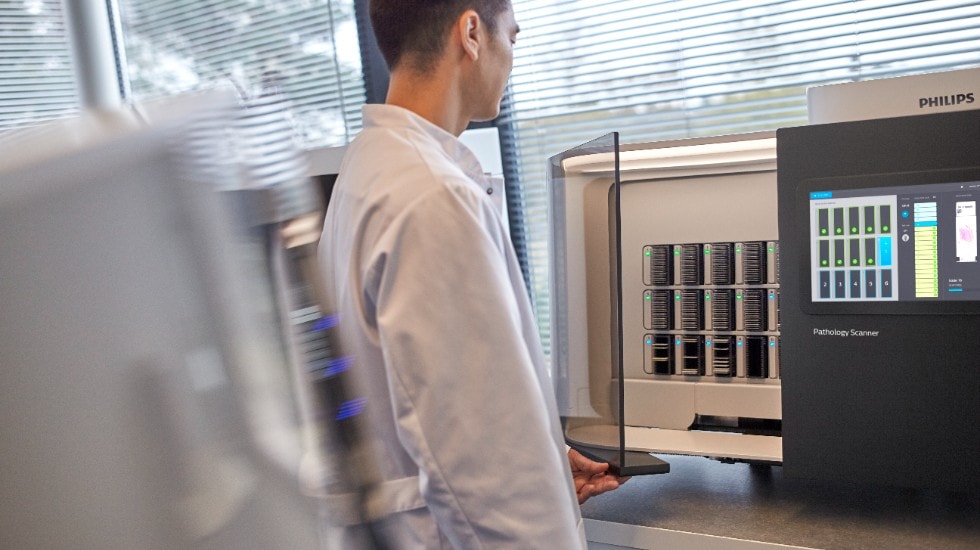Philips announces digital pathology scanner with native, configurable DICOM JPEG and JPEG XL output in world first
Philips Pathology Scanner SGi [1] offers powerful extension of native DICOM support designed for high-resolution whole slide images
Sep 08, 2025 | 2 minute read
Pathology plays a crucial role in the diagnosis of a variety of diseases, particularly cancer, through examination of patient tissue samples. With an estimated 70% of important medical decisions involving laboratory or pathology tests [2], the availability of digitally stored pathology images is especially important as it has a significant impact on patient care. The digital transformation of pathology also means there is a growing need for scalable storage to meet new data volumes and computing resources, which also allows full AI adoption in clinical and research environments.

DICOM (Digital Imaging and Communications in Medicine) is the international standard for medical images and related patient information. Because digital pathology is a relatively new imaging modality compared to radiology and others, there was no established DICOM standard in place. As a result, vendors created their own proprietary formats.
Today, Philips announced that it is expanding its SG300 and SG60 scanner offering with the Pathology Scanner SGi with configurable DICOM JPEG and DICOM JPEG XL output. As a result, it is the first in the world to offer native DICOM JPEG XL output. DICOM JPEG XL output files are up to 50% smaller while still providing the same high image quality [3], enabling pathology labs to store, manage, and analyze growing volumes of digital pathology data and enable more productive workflows in the cloud and on premise.
“The adoption of DICOM in pathology marks an important shift toward achieving scalable, interoperable imaging workflows, said Imogen Fitt, Principal Analyst at Signify Research. “As pathology labs face mounting data volumes and storage demands, the move to standardized formats helps reduce infrastructure costs and enables integration with a wider range of AI tools. Philips’ support for DICOM JPEG and DICOM JPEG XL as a native output from its scanners illustrates how vendors are aligning with these trends, intending to support capabilities such as centralized archiving, cross-modality diagnostics, and remote collaboration for customers.”
Sources [1] Pathology Scanner SGi is under development and is not CE marked and is not yet available for sale. [2] Report of the Second Phase of the Review of NHS Pathology Services in England, Lord Carter of Coles (2008). Results are specific to the institution where they were obtained and may not reflect the results achievable at other institutions. [3] Based on preliminary test data on diverse slide types. Data representative of a typical clinical mix is not yet available.





